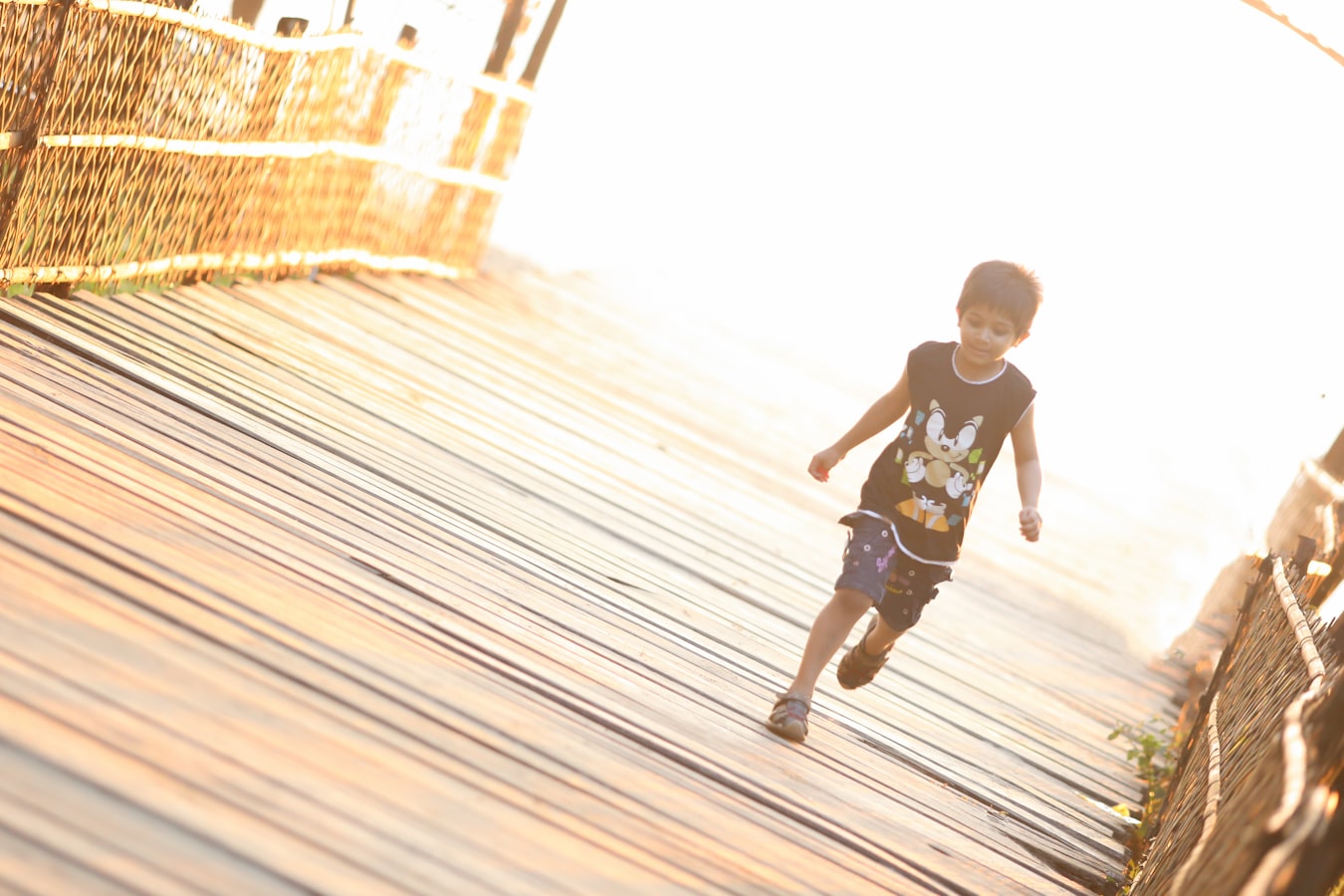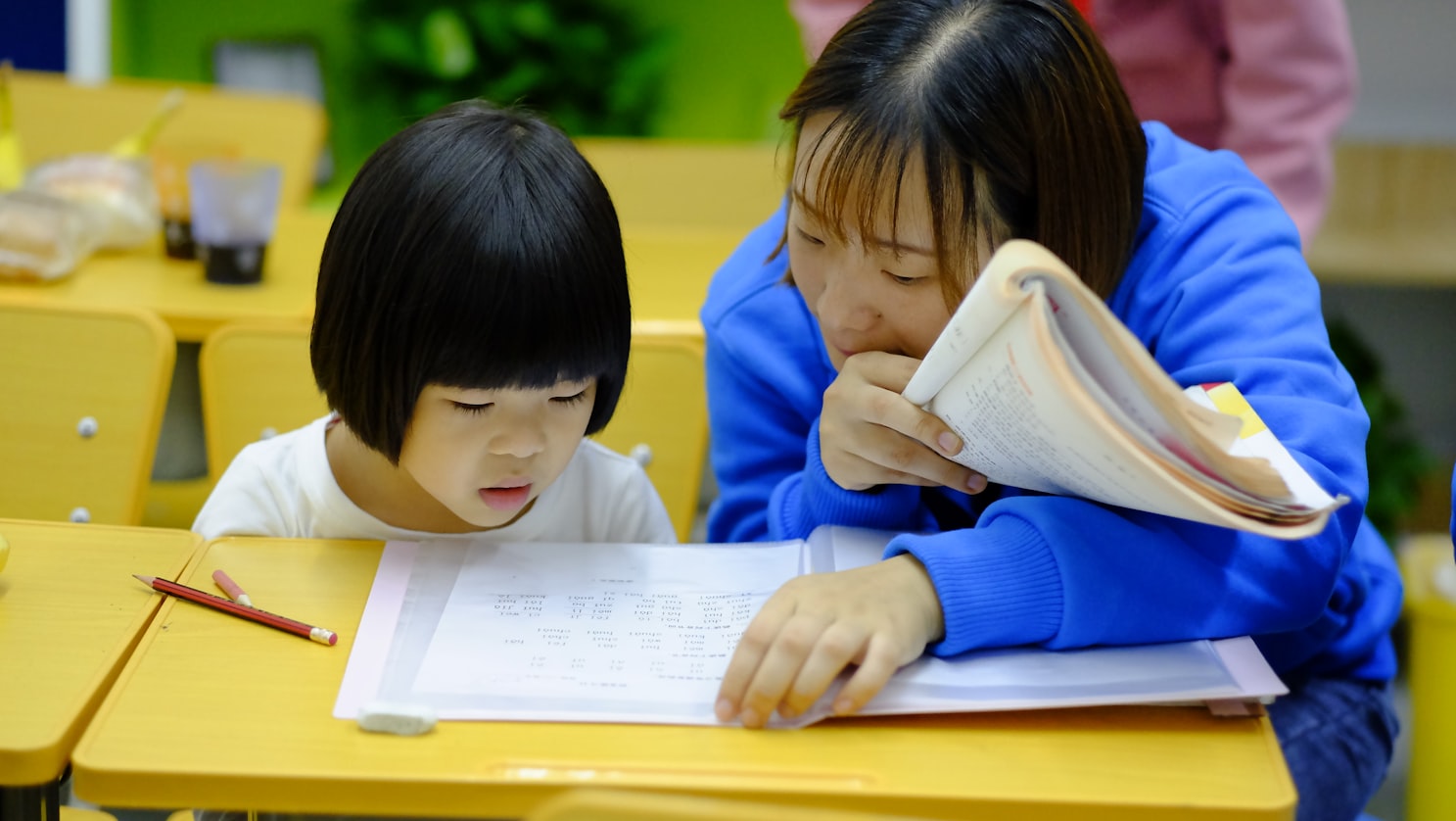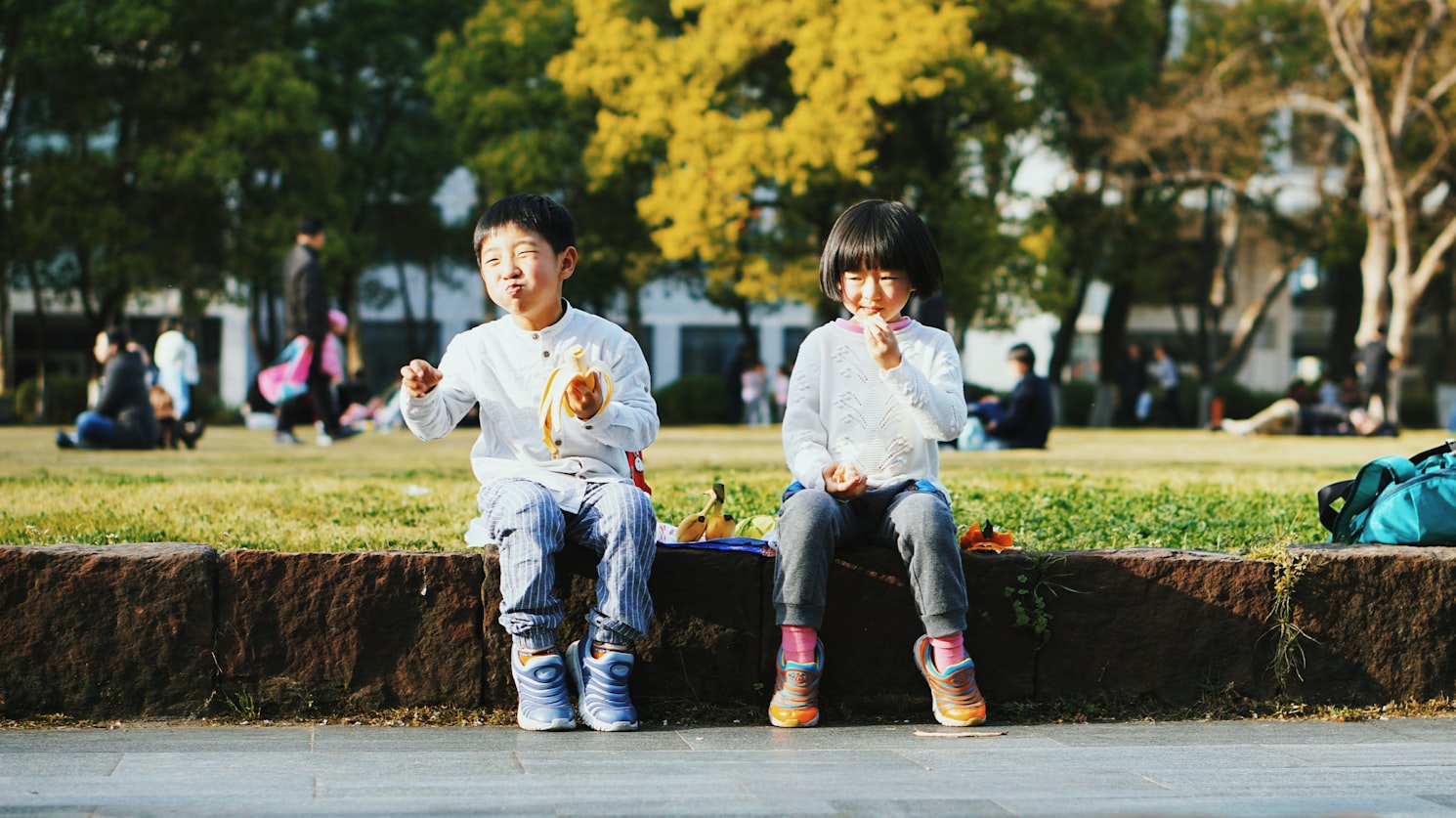Child Development And Milestones: Your 6-year-old Child

Is your child on track with his or her development? Let's find out!
Hello, primary schooler! At 6 years old, your child is about to enter a whole new world of primary school and related activities, and find even more opportunities to grow and develop. What exciting new milestones should you look out for in your little one?
As we take you through these important developments, you should keep in mind that every child is different and each one grows at their own pace. If you have any concerns or further questions, it is always advisable to visit your paediatrician.
6 Years Old Child Development and Milestones: Is your child on track?

Image source: Unsplash
Physical Development
At 6 years old, your child will want to explore more physical activities, including different types of sports that might be introduced through school.
At this stage, your child’s average height and weight* should be as follows:
- Boys
– Height: 115.5 cm (45.5 inches)
– Weight: 20.8 kg (45.8lb) - Girls
– Height: 115.0 cm (45.3 inches)
– Weight: 20.3 kg (44.8lb)
Some kids will experience growth at a fast rate and may blossom into natural athletes. Others will show excellent hand-eye coordination, or neat penmanship, showing development at both gross and fine motor skills development levels.
You should be able to also observe the following developments in your child
- Improved locomotor skills
- Capable of tying his own shoelaces
- Kicks a ball into a goal or throws a ball at a target
- Grows more permanent teeth
- Skillfully uses basic tools such as scissors and pens
- Writes legibly and draws clear pictures
- Follows the beat and rhythm of music
- Uses eating utensils correctly
- Shows better body balance and coordination
- Shows refined skills in physical activities such as running , jumping, and even swimming
Tips:
- Allow your child to join sports and other school activities that encourage physical activity. Besides the obvious benefit of exercise, sports can teach important skills such as team-work, focus, and leadership.
- Provide one hour or more of physical activity for your child every day.
- Make sure your child knows basic safety precautions when engaging in outdoor activities.
- Limit your child’s television and computer time to one or two hours a day, maximum.
- When an activity is known to be risky, such as climbing or swimming, always keep an eye on your child.
- Teach your child about road safety.
- Having healthy eating habits yourself will encourage your child to eat healthily.
When to talk to your doctor:
If your child,
- Has trouble using basic tools
- Appears to have a growth issue
- Still has difficulty sleeping at night

Image source: Unsplash
Cognitive Development
Your 6 year old child is just getting used to solving problems alone. While he still remains obedient to adults, there is also a keenness to perform tasks independently.
At this age, it’s also common for children to see things in black and white with no “grey” areas. For example, “Timmy is SO mean.” This is a normal part of cognitive development at this age, and as your child develops on this front, you’ll notice his ability to start seeing “in-betweens.”
Here are a few other developments on the cognitive front that you may start to notice:
-
Starts to develop a sense of humour and can understand nuances and word-play in jokes.
-
Can tell you his age.
- Uses logic and reasoning quite well.
- Shows improved concentration, focusing on a task for at least 15 minutes or longer.
- Easily counts to 20 and most likely, beyond.
- Counts from 3 backwards.
- Can tell the time (on the hour) and knows the difference between day and night.
Tips:
- Allow your child to solve problems alone, offering help only if needed. This encourages your child’s critical thinking and problem solving abilities.
- Encourage your child to make his own choices when safe and appropriate. For example, clothes, and meals (within reason).
- Answer your child’s questions with an open-ended question. For example, “Why do you think flowers smell nice?”
- Incorporate learning into daily activities in a fun way. So, when you go to the park or are on a walk together, take some time to teach your child about nature and the environment. Or, at the supermarket, give your child a small amount of money to buy a treat, and teach him how to calculate the correct amount of change.
- Don’t talk to your child in “baby language” any more. Try to involve your little one is family chats and discussions whenever it is appropriate.
When to talk to your doctor
If your child,
- Cannot follow three-step instructions like, “Please eat your lunch, finish your homework, and get ready to go to the playground.”
- Loses skills he once had.

Image source: Unsplash
Social and Emotional Development
Your child will make plenty of new friendships as he enters the world of school, and learn to negotiate the “rules” of socialisation. Your little one will also start to understand that not all friendships are the same, and may even have “best friends.”
Peer approval also becomes important to kids of this age. Your child will also be keen to please teachers and friends alike, and will also show more awareness about other people’s feelings.
Here are some other developments you may notice in your 6 year old child:
- Shows concern for others
- Is eager to be liked and accepted by people
- Prefers playing with friends
- Understands the value of teamwork
- Prefers playing with same gender peers
- Vocalises emotions and feelings without resorting to crying or tantrums
Tips:
- Make it a point to find out every day if your child has any concerns or worries regarding school. Offer help whenever there is something stressing him out.
- Talk to your child about bullying and what to do should he encounter one.
- Teach your child about respecting others and the importance of helping those in need.
- Assign your child age-appropriate household chores to teach independence, responsibility and team-work.
- When your child shows good behaviour, make sure to give plenty of praise to reinforce the behaviour.
- Encourage your child to join group activities in school. But remember not to over-schedule your child’s day. It’s important to allow your child down-time, too.
When to talk to your doctor
If your child,
- Still gets anxious when separated from you.
- Does not interact with other kids.

Image source: Unsplash
Speech and Language Development
Your 6 year old child is a proper little chatterbox, capable of conducting conversations, asking questions, and even engaging in debates and arguments.
Your child at this age typically has a 2,600 word expressive vocabulary (words he can say) and a receptive vocabulary (words understood) of around 20,000 words.
Let’s take a look at more developments in this arena:
- Forms simple yet complete sentences with five to seven words.
- Expressively and colourfully describes experiences, feelings and thoughts.
- Starts to understand that words can have more than one meaning.
- Shows interest in age-appropriate books.
- Sounds out words that are unfamiliar.
Tips:
- Continue reading with and to your child and practice taking turns. Don’t stress if your child cannot read properly yet. The idea is to encourage a love for reading starting early.
- Ask your child about his day, encouraging explanations about experiences and feelings. This will enhance your bond and strengthen your child’s speech, ensuring strong communication channels.
- Never dismiss your child’s questions, and try to give your child your full attention when he’s talking to you.
When to talk to your doctor
If your child:
- Has difficulty expressing himself in complete sentences.
- Refuses to write or has no interest in reading at all.

Image source: Unsplash
Health and Nutrition
Children around this age will experience an increase of energy needs which means your child’s food intake may rise as well. Typically, a 6-year-old child needs around 1,700 to 1,800 calories, depending on activity levels.
The calorie intake for boys and girls of this age are as follows:
- Boys: 1,760 Kcal/day
- Girls: 1,644 Kcal/day
In that regard, your kids around this age should ideally consume the following on a daily basis:
Grain group
Your child would need 4 to 6 ounces worth of grains daily for good energy levels. This could consist of 1 to 2 ounces of dry cereal, 2 slices of bread, or 3/4 cup of cooked pasta.
Dairy group
For milk or dairy, your little one needs a daily intake of around 2.5 cups worth. So, 1/2 to 1 whole cup of milk or yogurt will do the trick. This enables your child’s bones to grow healthy and strong.
Protein group
Protein is important at this age since it supports your child’s proper growth. Your child needs 3 to 5 ounces of protein daily, which is 1 egg, or a child’s palm-sized portion of chicken, beef or fish.
Fruit and vegetable group
Fruits and vegetables are important for your 6-year-old child for good health and immunity. For fruits, they need 1 to 2 cups a day, and vegetables around the same quantity. Try starting your child’s day with a small bowl of fruit salad, and add around 1 cup of mixed vegetables in rice or noodles.
Grain
Make sure to add whole grains such as oatmeal, quinoa, whole-wheat bread, popcorn, brown or wild rice into your child’s meals. At this stage, your child also needs to be given 4 ounces of grains per day. So you can divide these accordingly into cups of cooked cereals or home-cooked breads.
Tips:
- Provide meals with a combination of all the groups so that your child could eat healthily for all breakfast, lunch, and dinner.
- Lessen the intake of sugary snacks and sweets. Try to always provide healthy snacks, saving the sweets for a special treat.
- Ensure your child drinks enough water through the day – around 5-6 small cups (or more, after intense physical activity).
Vaccinations and Common Illnesses
Typically by this age, most children should have had the following vaccinations:
- DTaP vaccine that protects against diphtheria, tetanus, and pertussis
- IPV vaccine that protects against polio
- MMR vaccine that protects against measles, mumps, and rubella
- Varicella vaccine that protects against chickenpox
- A flu shot which is typically given every year
But if that hasn’t been the case, we’d recommend that you check with your physician for those still left, on a regular basis.
As your child spends more time in school, he/she may or may not likely contract common colds and the flu. So keep an eye out for rashes or itching.
Treating Common Illnesses
To manage the three most common medical issues in kids – fever, cough, and cold – try the following:
- Fever: If your child has fever up to 38°C (100.4°F), give him/her plenty of fluids and encourage your kid to rest. You could also apply lukewarm compresses to your child’s forehead, armpits and groin areas to help bring the temperature down. If your child’s temperature rises above 38°C (100.4°F) you should bring him/her to the doctor and follow medical advice to manage your child’s health.
- Cough: While coughing is a reflex that clears the throat, it can become a nuisance if accompanied by a runny nose and sneezing. Ideally, you should first try home remedies such as ginger and honey mixed in lukewarm water. Plus, ask your kid to drink a minimum of eight glasses of water a day to help ease the discomfort. If your child cough does not ease after three to five days, or turns very phlegmy, bring him/her to the doctor for treatment and management advice.
- Cold: Unless its extremely distressing, avoid taking any OTC medication for common colds. Colds are caused by a virus and so antibiotics will not help. If your child’s cold is accompanied by body aches and very high fever, it could in fact be influenza. You’d need to bring your child to a doctor if so for medical advice.
It’s crucial to note here that while some medications can be bought without any prescriptions, your first option of treatment for mild health issues should be simple home remedies. For example, a child with a cold and cough should be given extra-warm fluids.
He or she could gargle with warm salt water for a sore throat remedy. Meanwhile, nasal saline solution will help decongest the nasal passage.
Check with the doctor if your child’s immunization records are up-to-date.
When to talk to your doctor:
Please do not hesitate to contact your doctor or paediatrician if your child
- Is underweight or overweight.
- Has unusual rashes, lumps, bumps or bruises, has prolonged diarrhoea or vomiting
- Or, has a very high fever (over 39 degrees Celsius).
In all these cases, you should see a doctor without any delay.
Previous month: 5 years 11 months
Next month: 6 years 1 month
Sources: Mayo Clinic, CDC, Web MD